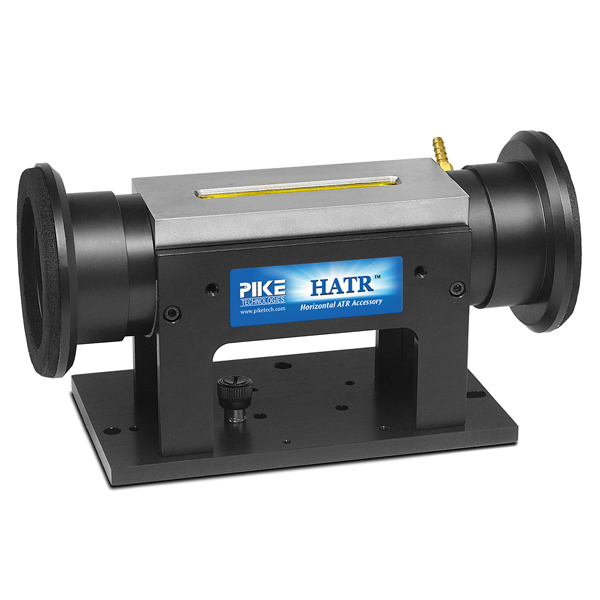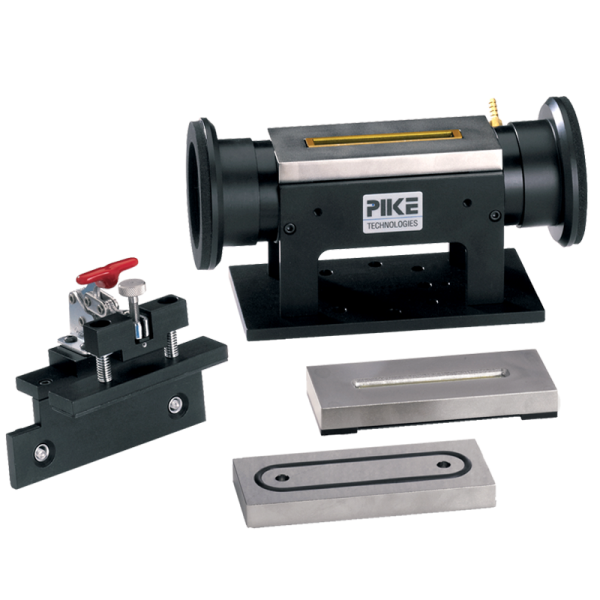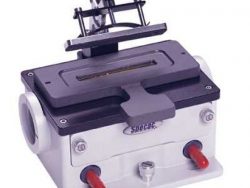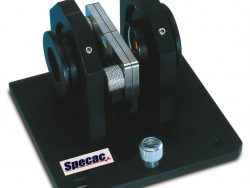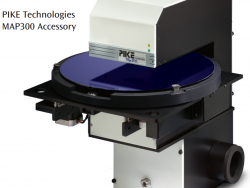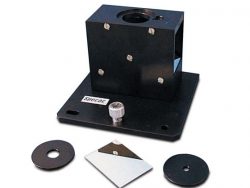Description
Multiple reflection ATR with 10 or 20 reflections. Interchangeable crystal configurations including ZnSe, Ge, AMTIR, KRS-5, and Si. Flat and trough plates available. Heating and flow through cell options.
Horizontal Attenuated Total Reflectance (HATR) accessories successfully replace constant path transmission cells, salt plates and KBr pellets used in the analysis of liquid, semi-liquid materials and solids. HATRs feature a constant and reproducible effective pathlength and are well suited for both qualitative and quantitative applications. The HATR may be configured with flat or trough plates, and for up to 20 internal reflections. Flow cells and heating options are also available.
- Excellent energy throughput offering high signal-to-noise ratio
- Up to 20 internal reflections for maximum sensitivity for low concentration components
- HATR plates with ZnSe, KRS-5, Ge, AMTIR, and Si crystals
- Temperature control options
There are several high-quality crystal materials covering a full spectrum of applications. The most popular crystals are 4-mm thick and generate 10 reflections on the sample (45° face angle). The 2-mm thick crystals (Ge, ZnSe) result in 20 reflections. Trough and sealed flat crystal plates are sealed using metallic gaskets, eliminating premature failure and the risk of cross-contamination associated with inferior, epoxy-bonded systems.
All ATR plates are pin-mounted to the HATR base with no alignment required. Crystal plate changeover is rapid, allowing a wide range of samples to be analyzed with maximum convenience. The HATRs have been optimized for maximum optical throughput and excellent quality spectra can be obtained from demanding samples.
FLAT PLATE
The flat plate is used for the analysis of solid materials, including polymer and film samples. The crystal is mounted slightly above the surface of the metal plate, which helps to achieve good crystal/sample contact when the flat plate press is used. The ZnSe and Ge 45-degree flat plates are available in a sealed version, which is ideal for sampling of oils and other types of low surface tension, non-volatile liquids.
TROUGH PLATE
The trough plate is designed for easy sampling, with a large, recessed crystal to accommodate the sample – generally a liquid, powder, or paste. Typically, only a thin layer of the sample needs to be applied onto the crystal surface. For fast evaporating samples, a volatiles cover should be used to cover the sampling area. By using the optional powder press, soft powders often produce quality spectra when analyzed by HATR, assuming that they can be put in intimate contact with the crystal.
RCPLATE™
The RCPlate is designed for special applications, such as measurements of coatings, mono-molecular layers, or bio-films deposited directly upon the HATR crystal. The plate allows easy removal and reinsertion of the ATR crystal.
FLOW-THROUGH CELL
Flow-through cells are a versatile option for the dynamic laboratory. The ATR crystal is sealed in with O-rings, which allows for user-changeable crystals. The sample may be introduced by syringe or through tubing connected to a 1/16-inch compression fitting. Flow-through cells may be configured for temperature control and with PTFE coating.
PHOTOCATALYTIC FLOW-THROUGH CELL
PIKE offers a flow-through cell with a quartz window, integrated into the cell lid for photocatalytic studies. Due to UV-induced degradation of ZnSe caused by the external source probe, we recommend using an AMTIR crystal.
TEMPERATURE CONTROL
Resistive heating and liquid jacketed plates are available for thermal studies. The maximum temperature is 120 °C for all crystal types. The Digital Temperature Controller offers touch-screen operation, and may be used with TempPRO software. Ramps and hold times are easily programmed through TempPRO software. Data collection may be initiated as a function of time or temperature with most FTIR spectrometers.

